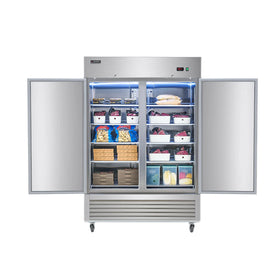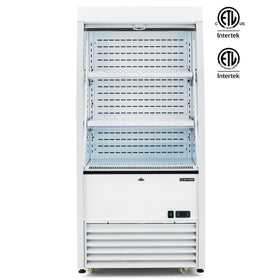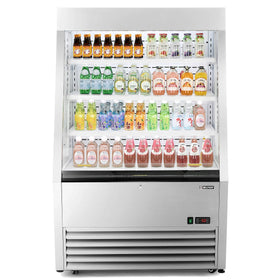Food cooked over a flame just hits differently: everyone knows that. But not all food needs to be cooked in the same way over the flame. For example, making a barbecue for a family gathering on New Year’s is different from roasting some pancakes and eggs for the kids’ breakfast. One of these tasks is for a grill and the other for a griddle: and what is good for the grill may not necessarily be good for the griddle. In this article, we will explore the main differences between a grill and a griddle and give you some tips on choosing between the two.
WHAT IS A GRIDDLE?
The key feature of a griddle is its even heating across the entire surface, which helps cook food uniformly. The key feature of a griddle is its flat, even surface, which allows you to cook a variety of food items, including meats and vegetables.
In the case of commercial griddles, some models allow you to alter the heat levels on different parts of the surface to simultaneously cook different items. Most modern commercial griddles are made of stainless steel, but there are also traditional models made of cast iron. Griddles are typically used for cooking items like pancakes, eggs, bacon, and sandwiches.
WHAT IS A GRILL?
A grill can be simply described as a cooking device used for grilling food over an open flame or heat source. Grilling must involve a significant amount of direct, radiant heat, and the grill is the equipment that helps cook the meat and vegetables. Some grills are standalone appliances, while others are built into an outdoor kitchen setup. Let's look into some different types of grills:
TYPES OF GRILLS
Charcoal Grills
Charcoal grills are the most traditional kind of grill. They use charcoal briquettes or lump charcoal as the heat source and often add a nice smoky flavor to food. Charcoal grills are the ultimate American cooking equipment. Let's learn a fun fact about them!

Fun Fact About Charcoal Grills
Did you know that the man who invented the charcoal grill was the cousin of the legendary carmaker Henry Ford? In 1919, Mr. Ford himself assigned his cousin, Mr. Edward G. Kingsford, the task of establishing a Ford auto parts plant and sawmill in northern Michigan.
Mr Kingsford quickly noticed that the sawmill and plants generated a lot of wood waste and wondered if it could be used better. His search led him to the construction of the first charcoal grill, an innovation that is still relevant today.
Gas Grills
Gas grills use propane gas or natural gas. They often offer precise temperature control and are convenient to use.
Electric Grills
Electric grills are powered by electricity, and so they are safe enough to be used indoors or in places where open flames aren't practical.
MAIN DIFFERENCES BETWEEN A GRIDDLE AND A GRILL
The primary difference between a griddle and a grill lies in the way their surfaces are designed and the cooking techniques each can accommodate. Let’s explore some of these:
Surface and Heating
The main feature of a griddle is its flat, smooth surface, usually made of cast iron or stainless steel. This surface is important as it allows food to cook evenly without direct exposure to flames.
The main feature of a grill is its raised ridges or bars, which have spaces between them. These bars create sear marks on food, giving it that deliciousness while also allowing fat and liquids to drip down.
Heat Distribution
A griddle provides even heat distribution across the surface, so there are no hot spots or isolated cold spots. This is why many people prefer griddles for delicate items that require consistent heat to cook properly.
Grills provide direct heat from below, often over a flame. This is good in that the flame is more intense. However, heating can be uneven on a grill because some parts are consistently hotter than others. If your foods need to be seared or charred, you would love a grill.

Best Uses
Griddles and grills also vary in terms of their best uses. Griddles are perfect for breakfast items such as pancakes, eggs, bacon, sandwiches, and flatbreads. However, any other food that needs uniform cooking without searing will also do well on a griddle.
If you are cooking any food item that requires a crispy exterior while maintaining juiciness inside, a grill should be your go to. Meats like steaks, burgers, chicken, and vegetables to extremely well on a grill.
Food Flavor
A griddle does not impart any smoky or charred flavor since there’s no direct contact with flame or gaps for fat to drip through.
Grilling gives food a distinct charred or smoky flavor due to fat dripping onto the heat source, creating smoke.

In summary, a griddle is perfect for even cooking of delicate foods where extreme heat is not required. Grills, on the other hand, are more intense, and they add that smoky, charred flavor to your meats and vegetables which makes them extra delicious.
CHOOSING BETWEEN GRIDDLES AND GRILLS
So, how do you choose between a grill and a griddle? Which of these amazing kitchen equipment better suits your needs? There are a number of deciding factors. Let’s explore.
Cooking Style and Flavor Preferences
Grill: If you love charred, smoky flavors and the visual appeal of sear marks on meats and vegetables, a grill is the way to go. The raised ridges and open flames impart unique flavors and textures.
Griddle: For foods that require even heat and delicate cooking (like pancakes, eggs, or sandwiches), a griddle’s flat surface is ideal. It’s also great for foods that shouldn’t be exposed to direct flame or smoke.
Types of Foods
Grill: Best for grilling meats (like steaks, burgers, or chicken), vegetables, and foods where fat dripping away enhances cooking, leaving behind crispy, flavorful exteriors.
Griddle: Perfect for breakfast items (pancakes, bacon, eggs), grilled cheese sandwiches, flatbreads, and seafood. Griddles allow for a broader range of delicate foods that might stick or burn on a grill.
Portability and Space
Grill: Most outdoor grills are bulkier, though there are indoor electric options. If you plan to cook outdoors or in larger spaces, a grill might be more appropriate.
Griddle: Griddles are often more compact and portable, with both indoor and outdoor options. They’re great for small kitchens, countertops, or areas where space is limited.
Ease of Cleaning
Grill: Grills, particularly charcoal or gas grills, may require more cleaning effort, as food can stick between ridges, and grease drips down to the flame or charcoal.
Griddle: A griddle’s flat surface is generally easier to clean. Many griddles come with drip trays that collect excess grease, making cleanup more convenient.
Health Considerations
Grill: Grills allow fat to drip away from food, which can lead to slightly leaner meals, though the exposure to flame can sometimes produce carcinogens (like char or smoke).
Griddle: While a griddle keeps food in its juices and fat, it’s excellent for controlled cooking without the risk of burning or smoking.
Cooking Speed & Control
Grill: Grills offer quick, high-heat cooking, especially if you want a fast sear. However, heat can be uneven, and it may require careful control.
Griddle: Griddles offer slower, even cooking, which is beneficial for delicate foods requiring consistency. You’ll have more control over the exact heat level.
In summary, choosing between a grill and a griddle depends on your cooking preferences, the type of food you plan to prepare, and practical considerations like space and cleaning. If you enjoy bold, grilled flavors and frequently cook meats, go for a grill. If you prefer versatility, controlled cooking, and easier cleanup, a griddle might be your best bet.
In any case, you might want to check out the following recommendations from Wiprep’s Kitchen, a trusted supplier of commercial kitchen equipment.









